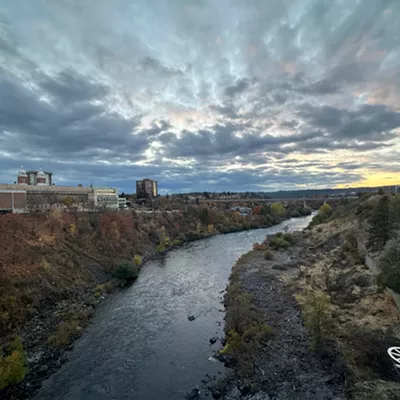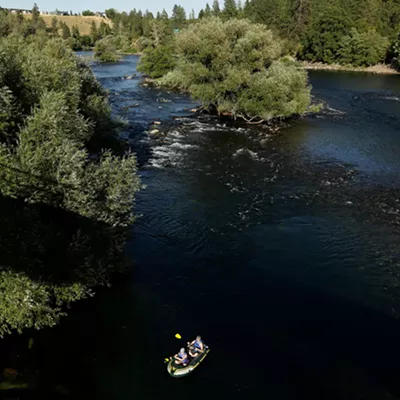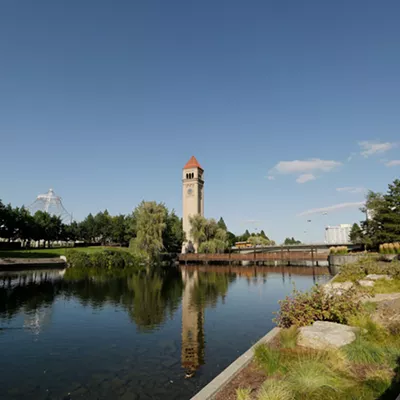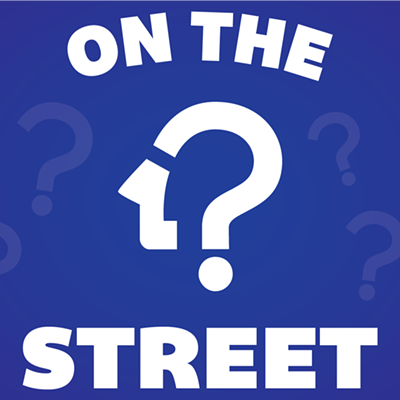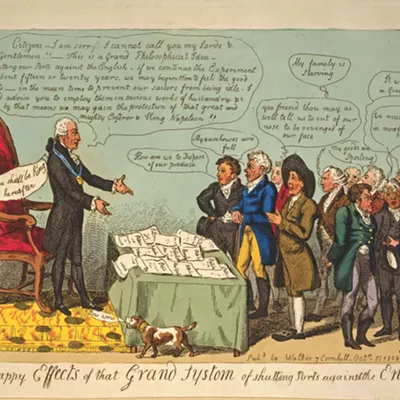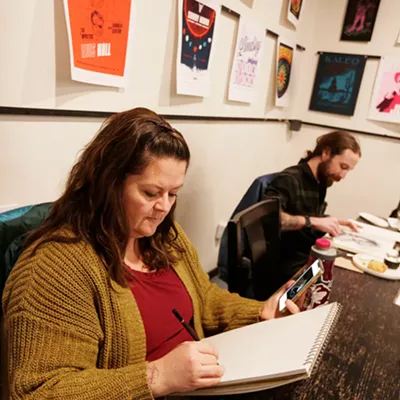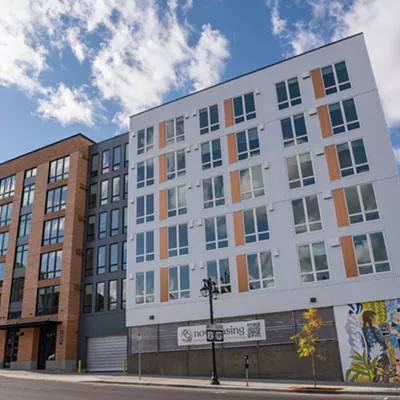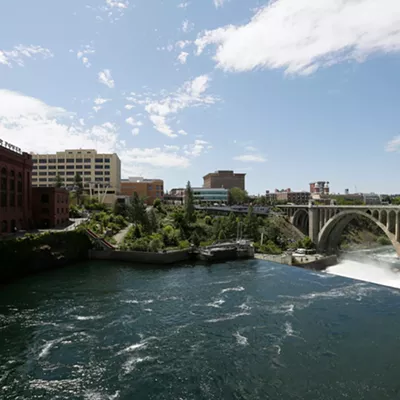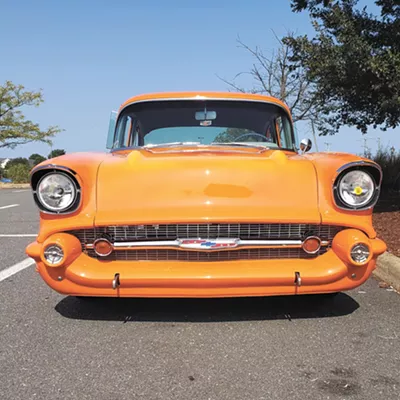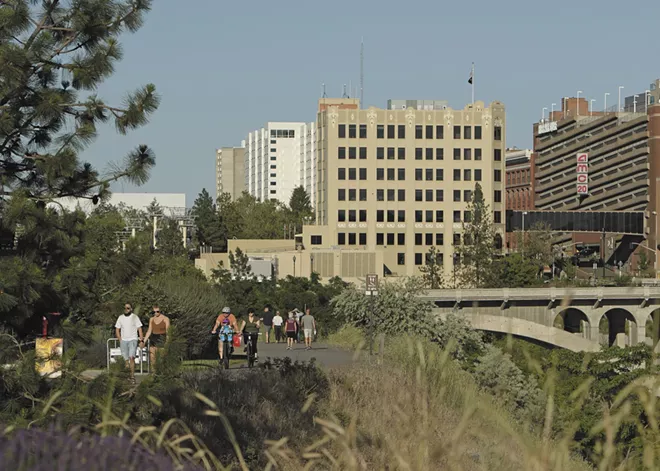
A couple months ago, I visited Detroit on a "study mission" with a bunch of fellow economic development professionals and a few elected officials. I had known from a couple prior visits that the city's post-Great Financial Crisis reputation was quickly becoming outdated, but seeing the place — and listening to techno, walking the waterfront, exploring gritty, artsy neighborhoods — firsthand with peers really solidified my sense of a city on the rise.
I was particularly impressed with their effort to develop (or, in some cases, redevelop) greenways across the city connecting neighborhoods with the city's newly active urban waterfront. It seemed like every neighborhood had a tentacle of paved trail, often with beautiful playgrounds, parks and other amenities in the right-of-way. Many had public art and murals and community gardens. Near a few of them, you could tell that businesses were starting to adapt, with large outdoor patios and (of course) abundant bike racks.
Spokane certainly isn't a slouch for multiuse urban trails. The Centennial Trail is a 37-mile (or 61-mile, if you count the stretch in North Idaho) cultural icon. The new South Gorge Connector is poised to provide breathtaking new views of the Monroe Street Bridge. WSDOT is constructing a new paved trail (the Children of the Sun Trail) near the North Spokane Corridor. Even Spokane Valley has a 6-mile stretch of rail trail paralleling Sprague Avenue.
But I'd argue we don't take nearly enough advantage of them.
In too many places, we've missed huge opportunities to develop businesses and buildings that interact directly with users of the trail. No-Li Brewhouse, for example, is only a couple hundred feet away from the Centennial Trail, but you certainly wouldn't know if you were riding by. Kendall Yards makes a better effort, but even there, most of the retail shops and restaurants are up on Summit Boulevard, and a Premera Blue Cross office planned in the area could make the trail area seem like a bit of an afterthought.
In part because of the success of projects like the ones I saw in Detroit and others in Atlanta (like Ponce City Market along the Beltline), Indianapolis, Minneapolis and New York City (yes, the High Line counts!), property developers and urban planners are increasingly advocating for trail-oriented development. In other words, making housing, retail and office development as compatible and integrated with urban trails as possible. Instead of facing away from a trail, development and businesses would open directly onto it. Of course, this makes trail users prime customers, but it also increases property values, as seen near analogs in Atlanta, Detroit and Indianapolis — and in Seattle, along the Burke-Gilman Trail.
...property developers and urban planners [in some cities] are increasingly advocating for trail-oriented development.
W hat would trail-oriented development look like in Spokane? Well, it would probably start with simple marketing — help for small businesses to understand the customers they miss if they fail to take advantage of their location along a local trail, how much they typically spend, and what types of products they tend to be looking for. Gradually, perhaps a retailer or a restaurant will shift its offerings or create new outdoor spaces. Other businesses might specifically choose to open to be close to the trail, and the city should support them however it can.
In time, the city could adopt zoning rules that require some level of increased interaction for properties adjacent to the Centennial Trail or other regional trails. This would ensure that new-construction buildings offer additional amenities to serve trail users. For apartment buildings, this might mean providing high-quality bike storage, prioritizing patio or balcony spaces for people-watching, allowing more units so more people can live near such an incredible amenity and ensuring direct access to the trail itself. For commercial buildings, it might mean providing a "main" entrance directly from the trail and requiring "active uses" — generally, retail and restaurant spaces — along it on the first floor.
Finally, the city could do more to construct additional off-street trails across the city — particularly a north-south route through the core of the city. Bicyclists of all ages generally feel safer on dedicated routes where they never have to interact with motor vehicles, and the biggest obstacle to trail-oriented development here in Spokane is a simple lack of urban trails. In the 1990s, the Centennial Trail was a huge lift, but few would argue that it hasn't paid off. I'd argue that it's time for our next big effort.
Trail-oriented development like I am describing takes time. But after what I've seen in Detroit, Atlanta and elsewhere, I'm convinced it can make our city more livable, economically thriving, exciting, community-oriented and healthy. ♦
Anthony Gill is an economic development professional, Spokane native and writer of Spokane Rising, an urbanist blog about ways to make our city a better place to live.



